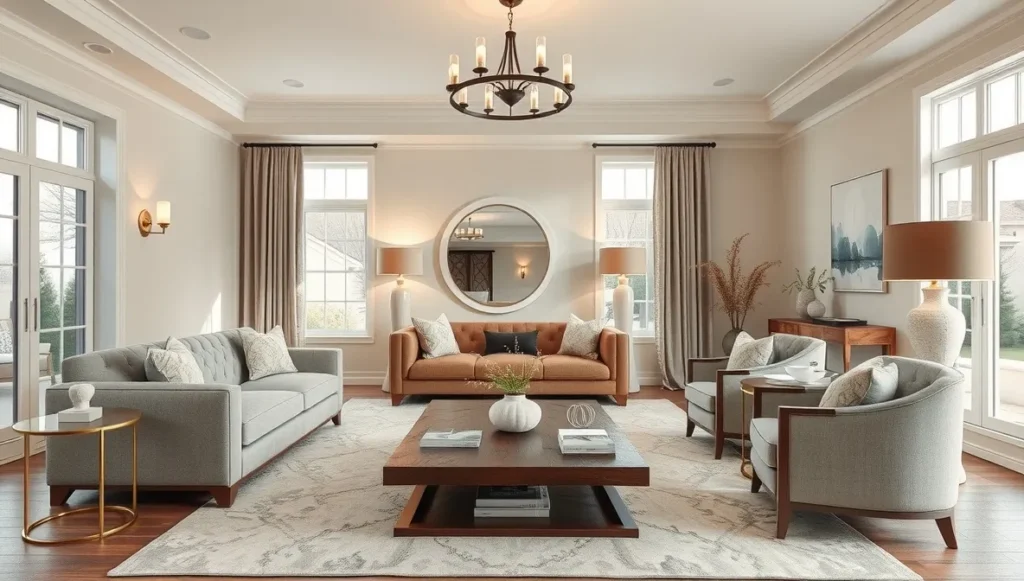- The Unexpected Magic of Boho Scandi: Why This Fusion Style is Taking Over Modern Homes - September 2, 2025
- Japandi Design: Why This Japanese-Scandinavian Hybrid Has Taken Over My Client Projects - September 2, 2025
- The Real Story Behind Transitional Interior Design: Why It Actually Works - September 1, 2025
Table of Contents
After fifteen years of this work, I’ve figured out something: people are complicated. They don’t want to live in a magazine spread, but they also don’t want their house to look like a garage sale.
Last month, a client showed me this gorgeous all-white modern living room she’d torn out of Architectural Digest. Two minutes later, she’s telling me about her grandmother’s mahogany sideboard that she absolutely has to keep. Another client insisted he wanted everything “clean and modern” until I started talking about replacing his overstuffed leather recliner. Suddenly we’re having a very different conversation.
That’s the thing about transitional design – it doesn’t make you choose sides.
Here’s What Transitional Design Actually Is
Stop thinking about design rules for a second. Transitional isn’t about following some formula from a textbook.
It’s what happens when you realize that your cozy, lived-in traditional stuff doesn’t have to disappear just because you want your house to feel more current. And your sleek modern pieces don’t have to live in some cold, museum-like space.
I worked with this couple in Buckhead – he collected mid-century modern furniture, she inherited all this beautiful traditional stuff from her family. Instead of making them choose, we figured out how to make it all work together. His Eames chair looks fantastic next to her antique secretary desk. Who knew? Take a look here.
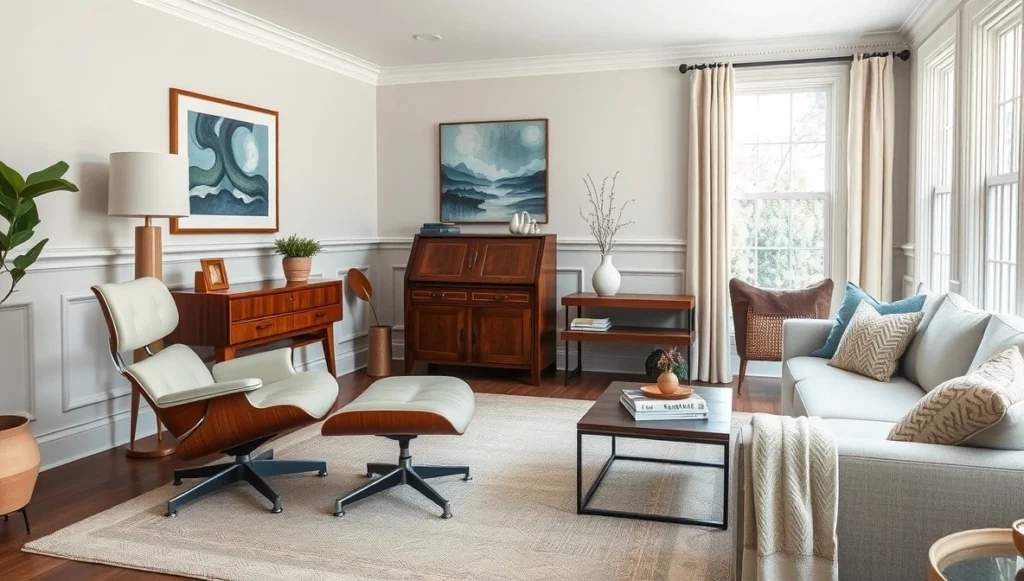
The Building Blocks That Make It Work
Getting the Colors Right
Confession time: I used to be terrible with color. My early projects? Beige everything. Beige walls, beige sofas, beige rugs. Safe, sure, but also mind-numbingly boring.
These days I’m obsessed with what I call “colors with backbone” – grays that have some warmth to them, whites that don’t make you feel like you’re in a hospital, deeper shades that add some drama without being overwhelming.
There’s this one gray I use constantly – Benjamin Moore’s Revere Pewter. Sounds fancy, but it’s basically the perfect not-quite-gray, not-quite-beige color that works with everything. I’ve probably used it in thirty different projects, and it never gets old. Here’s the room I completed recently for one of my client.
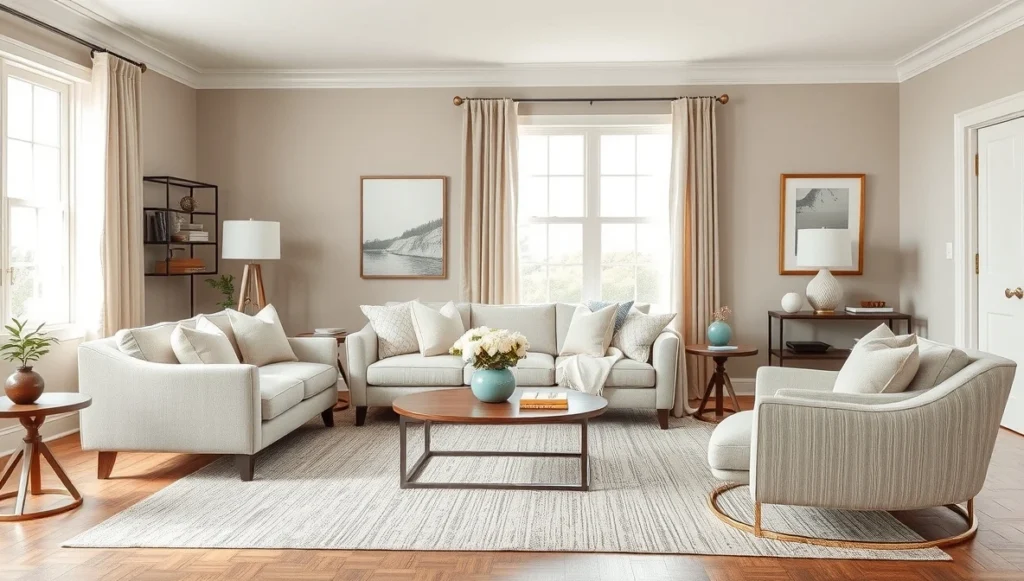
Finding Furniture That Actually Works
You know what drives me crazy? Sofas that look great in the showroom but make you feel like you’re sitting on a park bench at home. Or dining tables that photograph beautifully but wobble every time someone puts their elbows on them.
Transitional furniture is different. It’s designed by people who understand that furniture needs to do more than just look pretty. Clean lines, yes, but also comfortable proportions. Classic shapes, but not so fussy that you’re afraid to actually use them.
Take sectionals. Most of them are either way too contemporary (hello, uncomfortable angles) or so traditional they take over your entire living room. A good transitional sectional gives you the comfort and size you need without looking like it belongs in a furniture showroom.
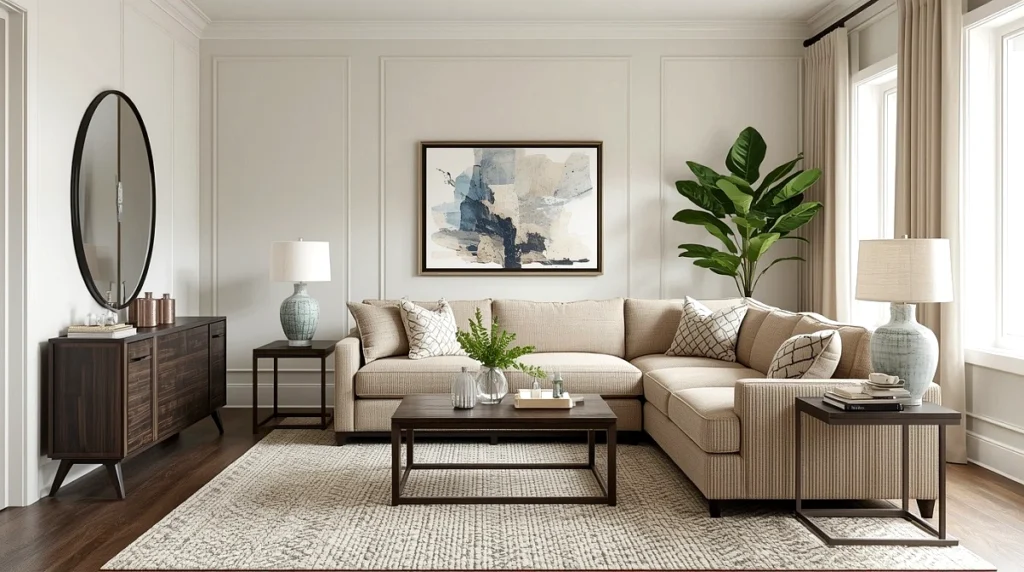
Mixing Without Making a Mess
Want to know the fastest way to ruin a room? Throw in one of everything and call it “eclectic.”
I’ve seen people try to cram a rustic farmhouse table, ultramodern chairs, traditional curtains, and contemporary art into one dining room. It doesn’t look curated – it looks like a yard sale.
The secret isn’t about having pieces from different decades. It’s about making sure they share something – maybe similar proportions, or complementary colors, or just a general “feel” that ties them together.
The Stuff Nobody Tells You
Here’s what design magazines won’t mention: real families are messy. Kids spill things. Pets shed. People actually use their furniture instead of just photographing it.
I learned this lesson the hard way with a client who had two toddlers and a golden retriever. We’d created this beautiful, Pinterest-perfect living room with a gorgeous white linen sofa. Three weeks later, she called me in tears. The sofa looked like a disaster zone.
Now I always ask about real life before we talk about pretty pictures. Do you have kids? Pets? Do you actually watch TV in your living room, or is it just for show? The answers completely change what we’re going to do.
That family I mentioned? We ended up doing something completely different. Instead of trying to make their formal living room work for everyday chaos, we turned their family room into the main gathering space. Comfortable sectional, coffee table that doubles as storage, side tables that can handle sippy cups and wine glasses with equal grace. The living room became what it was supposed to be – a place for grown-up conversations and the occasional fancy event.
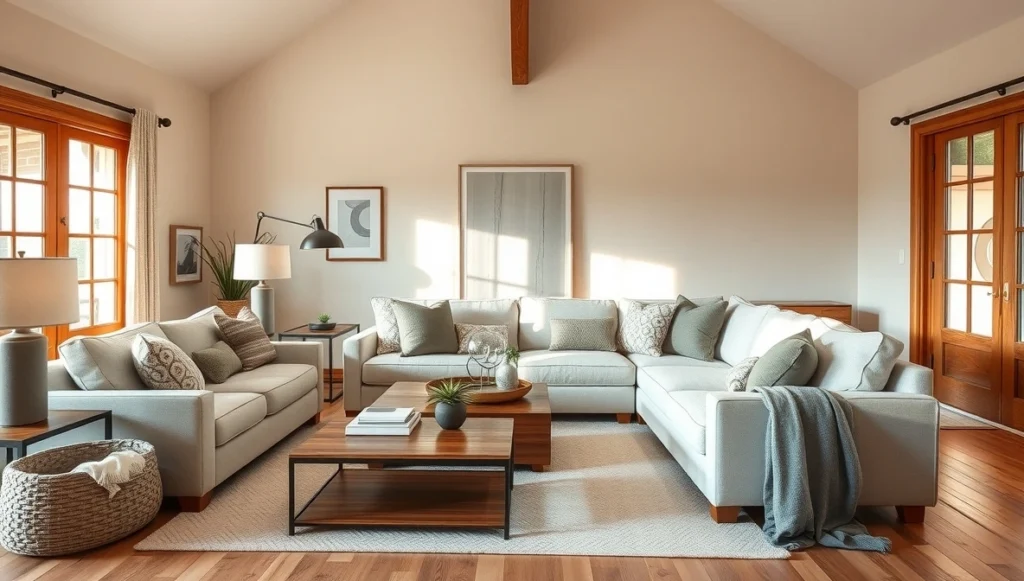
The Mistakes I See Over and Over
Playing It Way Too Safe
The other extreme is people who get so worried about making mistakes that they end up with rooms that look like beige explosions. Every wall is beige, every piece of furniture is beige, every accessory is some shade of tan or cream.
Safe doesn’t have to mean invisible. Your house should have some personality, some hint that actual people with actual opinions live there.
Forgetting About Proportion
This is a big one. You can’t just throw any traditional piece with any contemporary piece and expect it to work. A delicate antique side table is going to look lost next to a chunky modern sofa. Everything needs to relate to everything else in terms of size and visual weight.
Don’t Mix Things Just to Mix Them
I see this mistake constantly. Someone reads about “mixing styles” and goes nuts – traditional chair, modern lamp, rustic table, contemporary rug. It looks like a furniture store exploded.
The whole point isn’t to have one of everything. It’s about finding pieces that actually work together, even if they’re from different eras or styles.
Here’s my rule: if you squint at the room and something looks totally out of place, it probably is. Trust your gut.
Room-by-Room Reality Check
Living Rooms
Your sofa is probably going to be your biggest purchase, so start there. In a transitional living room, I usually pick something neutral and comfortable. Go for soft gray, beige, or cream with clean lines that won’t look dated in a few years.
Once that’s set, you can have some fun with the rest. Maybe a vintage coffee table and contemporary side tables with modern lamps. Contemporary side tables could also be paired with traditional artwork. The trick is making sure everything feels like it belongs in the same house, even if it wouldn’t normally be found in the same store.
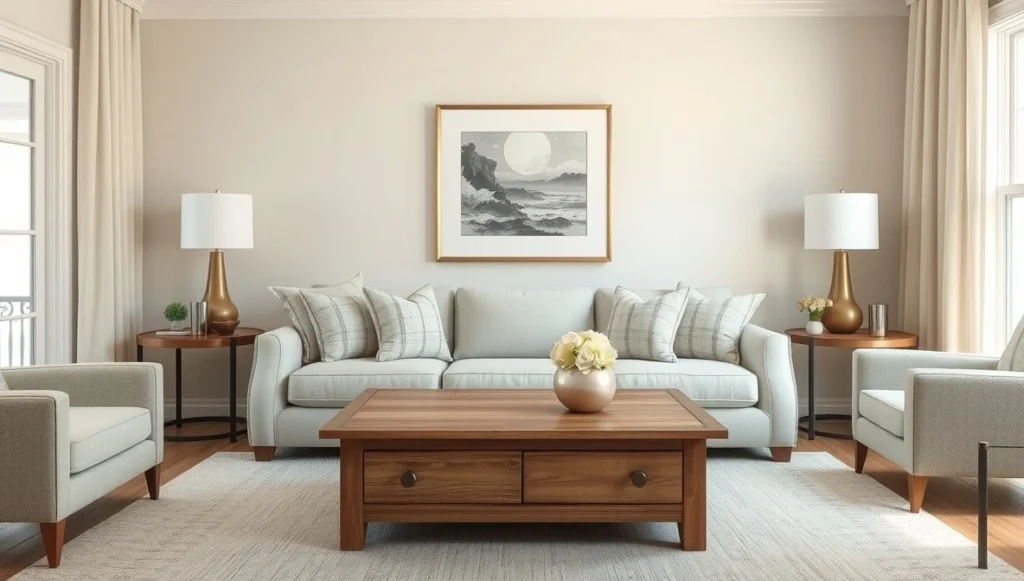
Dining Rooms
Nobody eats in their dining room anymore, right? Wrong. I’ve seen a huge comeback in formal dining, especially since everyone started working from home and actually spending time in their houses.
The key is making it work for both fancy dinner parties and Tuesday night takeout. Maybe a classic wooden table that can handle kids’ homework, paired with chairs that are comfortable enough for long conversations but nice enough for holidays.
Lighting matters huge here. A traditional chandelier can work great, but maybe choose one with cleaner lines or a more contemporary finish.
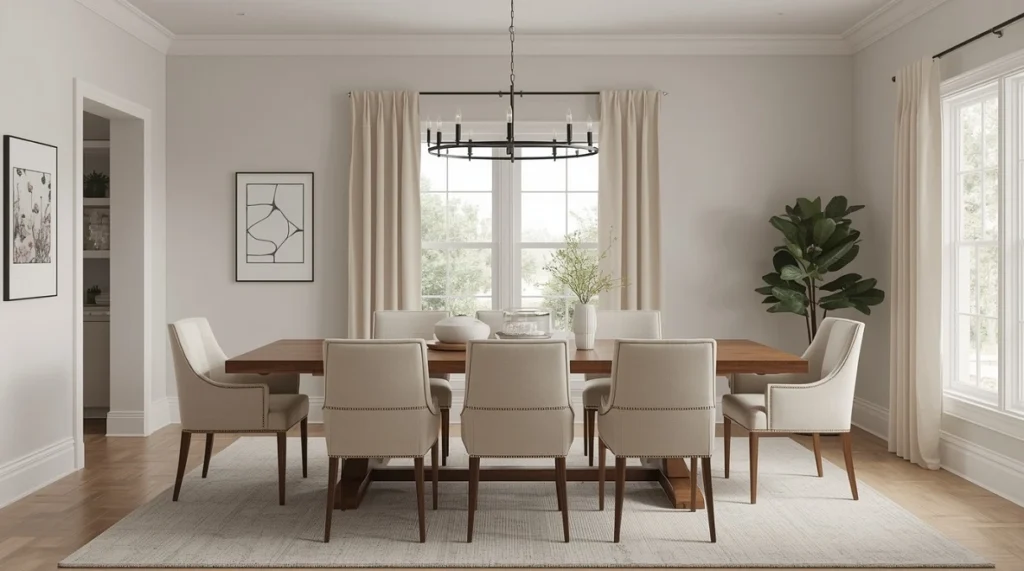
Kitchens
Kitchen renovations are expensive and stressful, so you want to get this right the first time. The good news is that transitional style is pretty forgiving here.
Shaker cabinet doors are your best friend – they’re classic enough to not look dated, simple enough to work with almost any hardware or countertop you choose. I’ve used them in probably 80% of my kitchen projects.
For countertops, quartz has become really popular, and for good reason. It looks like stone but doesn’t stain or scratch as easily. Pair it with subway tile – another classic that never goes out of style – and you’ve got a kitchen that’ll look good for decades.
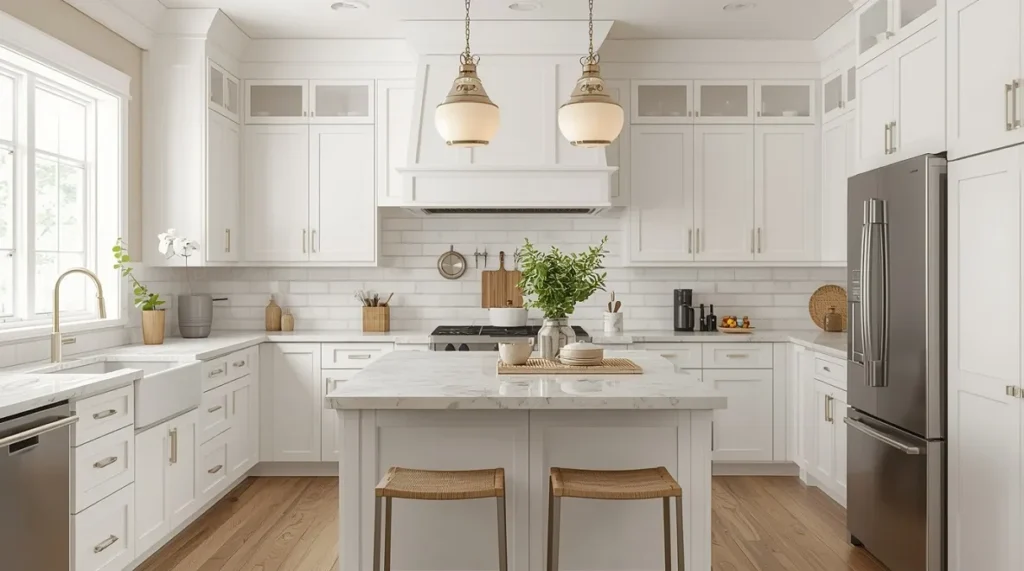
Master Bedrooms
Bedrooms should be calm. That’s not negotiable. But calm doesn’t have to mean boring.
I like to start with a really good headboard – upholstered ones are comfortable for reading in bed and they add some softness to the room. Traditional shape, but maybe in a contemporary fabric or an unexpected color.
Nightstands are where you can mix things up. Maybe one vintage piece and one modern piece, or matching traditional tables with totally different lamps. And please, invest in good bedding. Life’s too short for scratchy sheets.
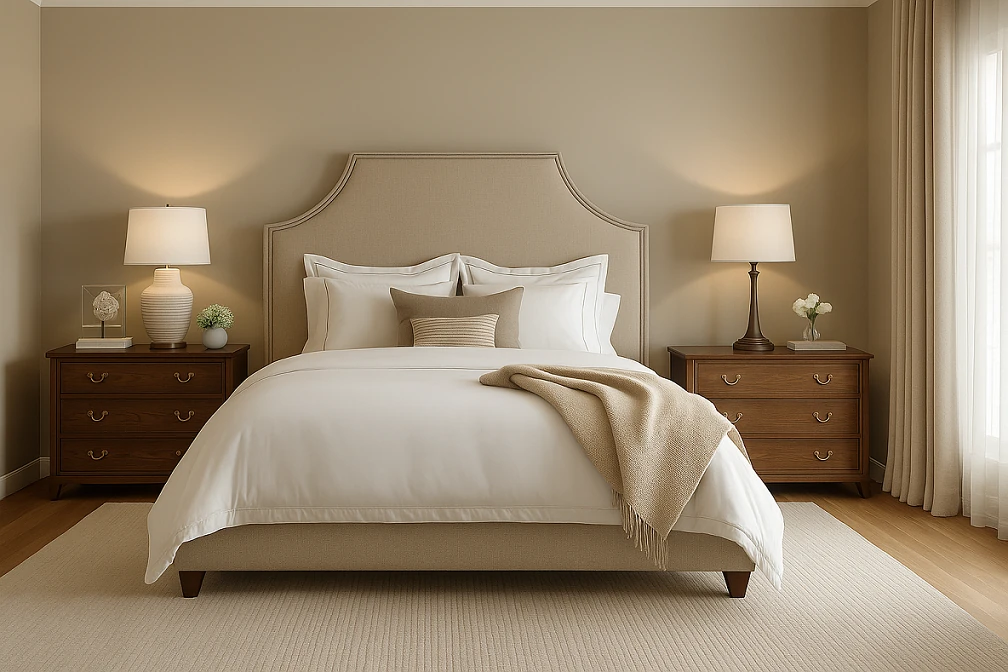
Home Offices
With everyone working from home these days, offices need to feel both professional and comfortable. Built-in bookshelves (traditional) with contemporary desk accessories. A classic leather chair with modern task lighting. The key is creating a space that works for Zoom calls but doesn’t feel corporate.
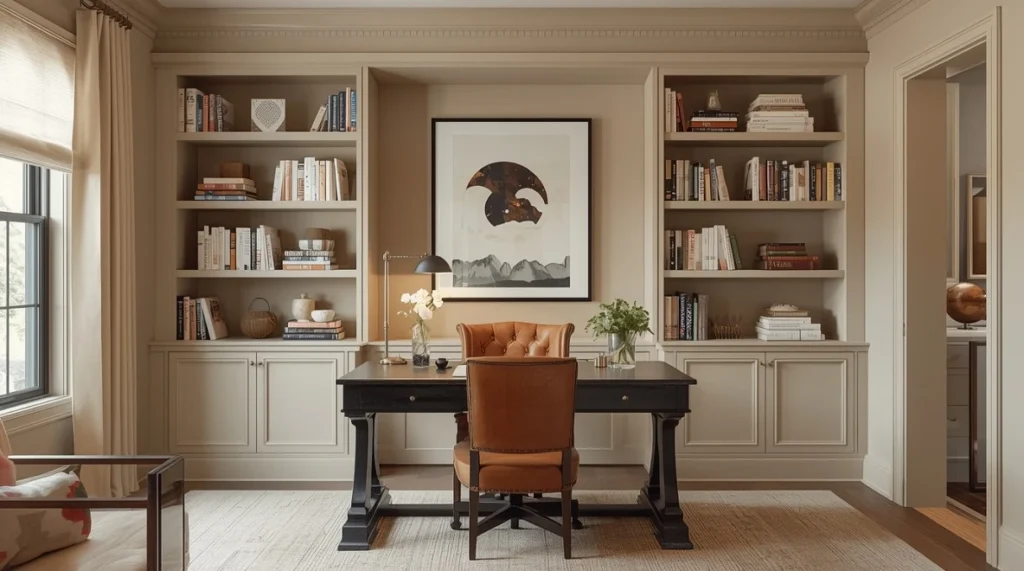
Bathrooms
Bathrooms are expensive to renovate, so choose elements that won’t look dated quickly. Classic subway tile with contemporary grout colors. Traditional fixtures with updated finishes. A vintage-inspired vanity with modern hardware.
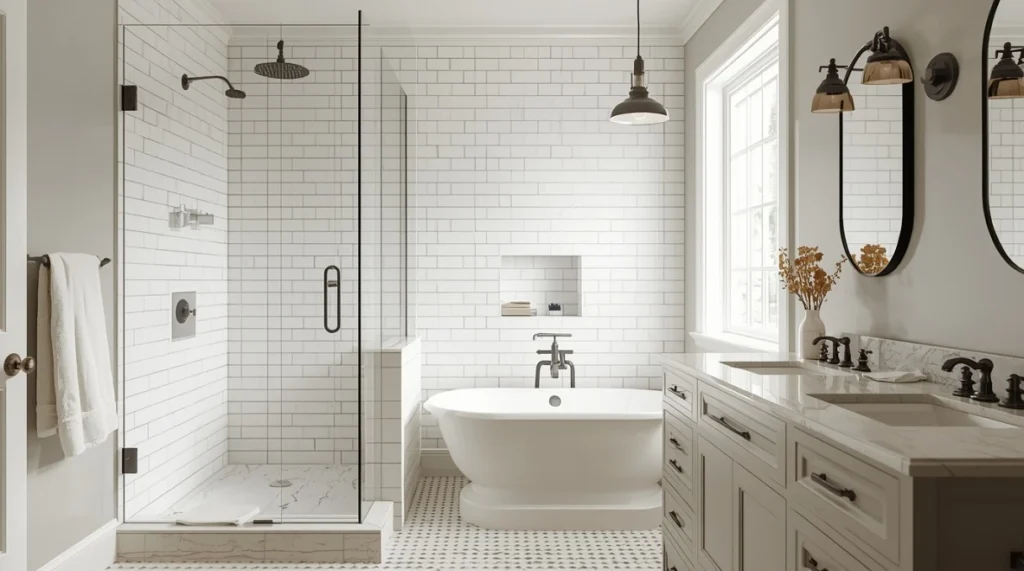
Entryways
First impressions matter, but entryways also need to be functional. A traditional console table with contemporary accessories. Classic pendant lighting with modern hardware. Good storage that doesn’t look like storage.
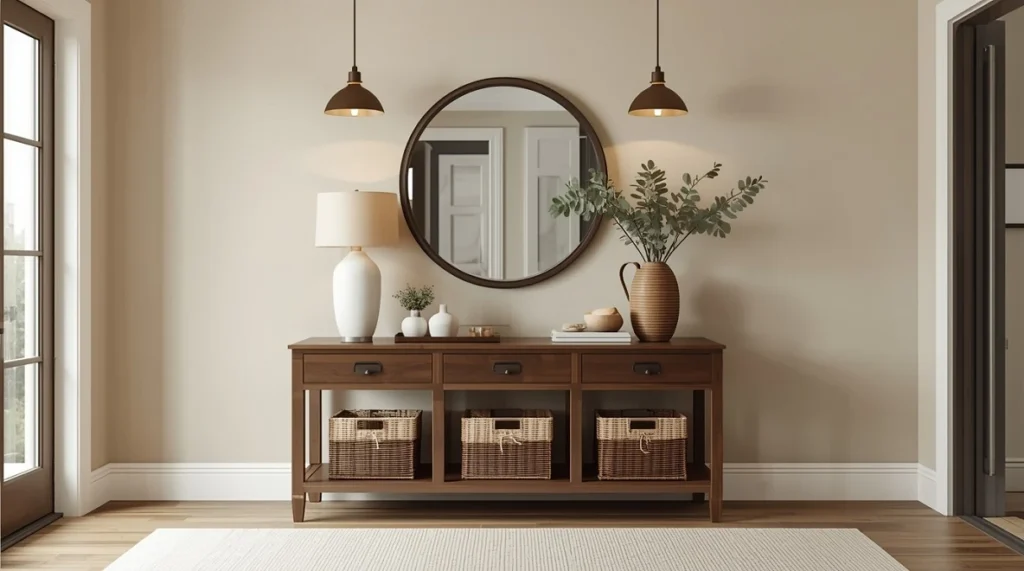
Children’s Rooms
Parents always ask me how to do kids’ rooms that don’t clash with the rest of the house. The answer is transitional design. Use classic furniture pieces that will grow with your kids, then add personality through bedding, art, and accessories that can easily change. Built-in storage with traditional details keeps everything organized without looking like a toy store exploded.
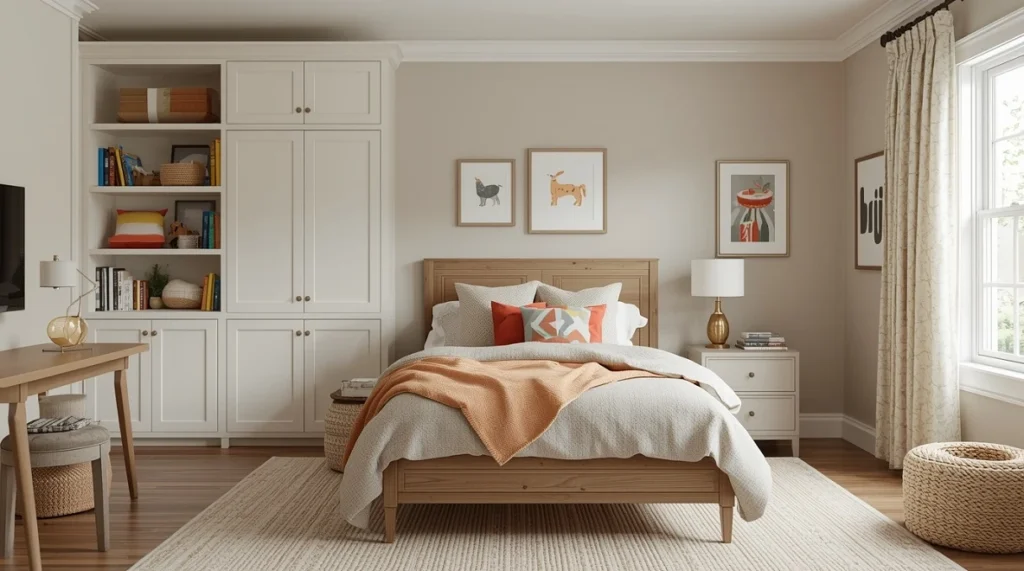
Guest Rooms
Guest rooms should feel welcoming without being too personal. Classic furniture shapes in updated colors. Traditional patterns in contemporary colorways. Everything should feel familiar and comfortable to visitors of any age.
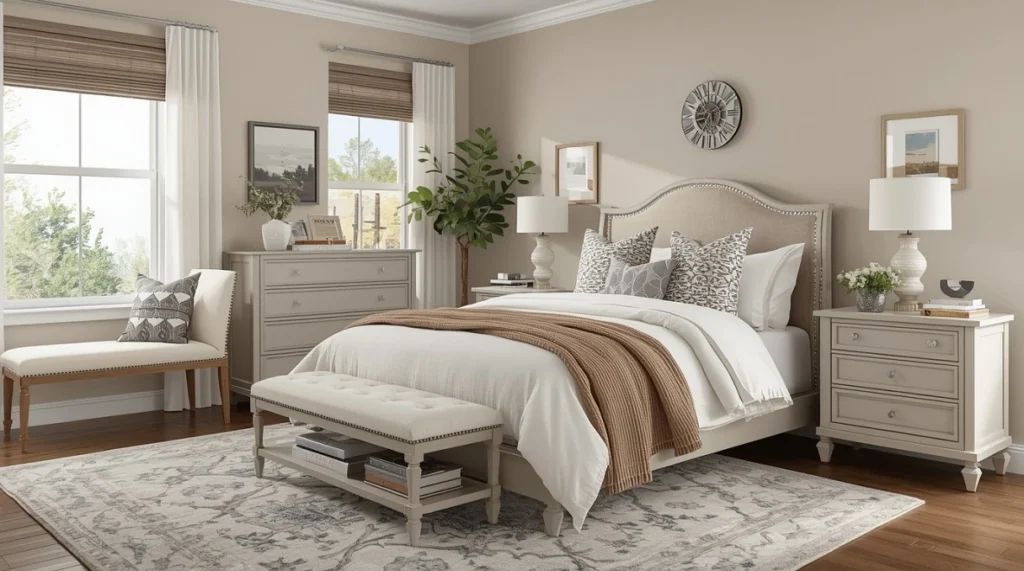
Let’s Talk Money
I’m just going to say it: good furniture costs money. But here’s the thing – transitional pieces tend to hold their value better than trendy stuff.
That bright orange sectional from 2019? Good luck selling that now. But a classic sofa in a neutral fabric with clean lines? Still looks current, still comfortable, still worth something if you decide to sell.
I always tell people to buy the best quality they can afford for pieces they use every day. Your sofa, your dining table, your bed. These are investments, not impulse purchases.
The Bottom Line
After doing this for fifteen years, here’s what I know for sure: the best rooms feel like they happened naturally. Like someone with good taste collected things they loved over time, and somehow it all works.
That’s what transitional design gives you – the freedom to mix what you love without worrying about whether it “matches” some design rule you read somewhere.
Your house should feel like you, not like a hotel lobby or a museum. It should be somewhere you actually want to spend time, not just somewhere that looks good in photos.
And if you can achieve that while also creating something beautiful and sophisticated? Well, that’s pretty much the whole point.
